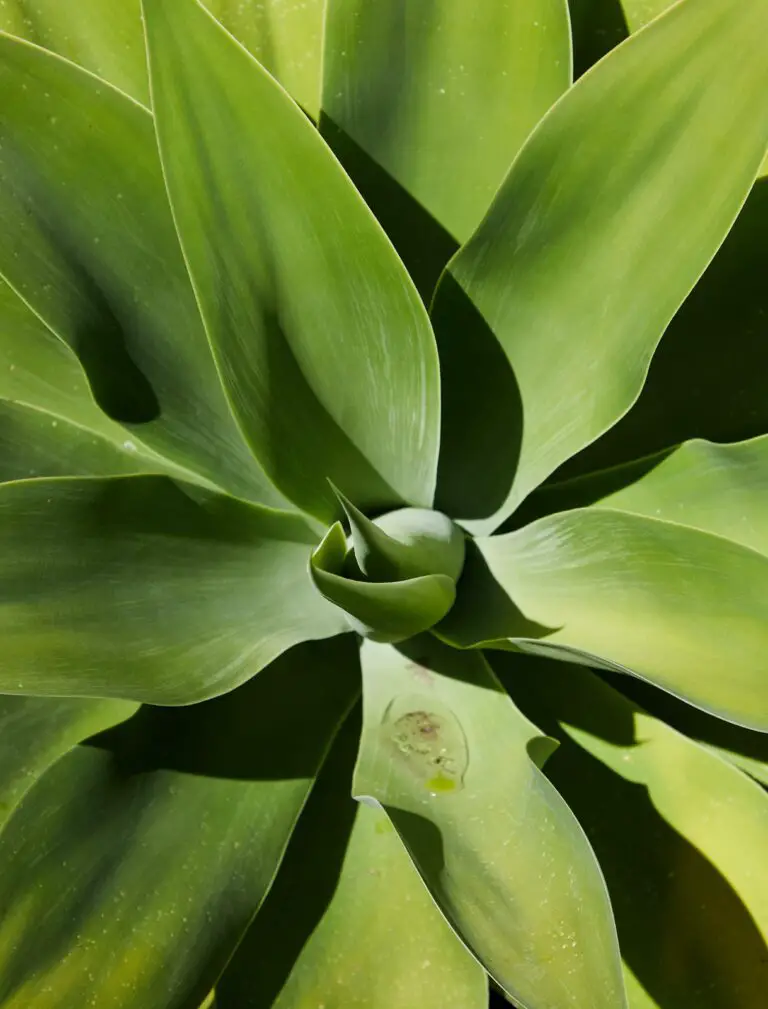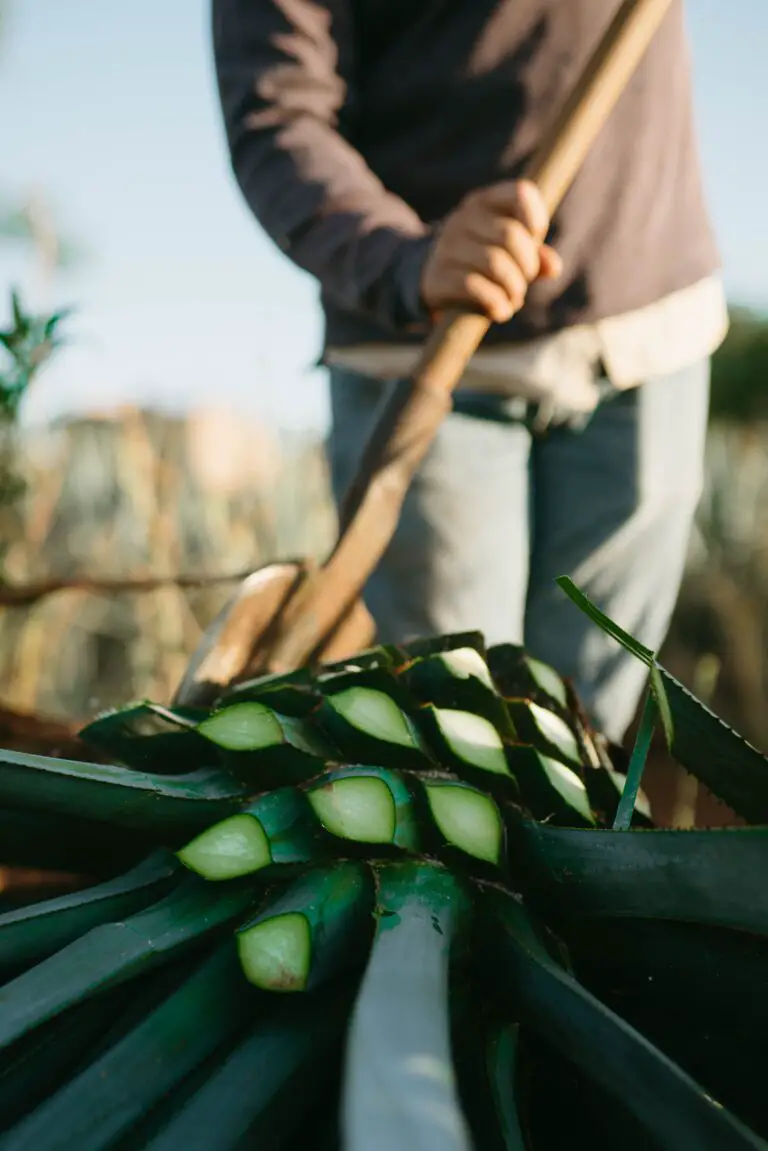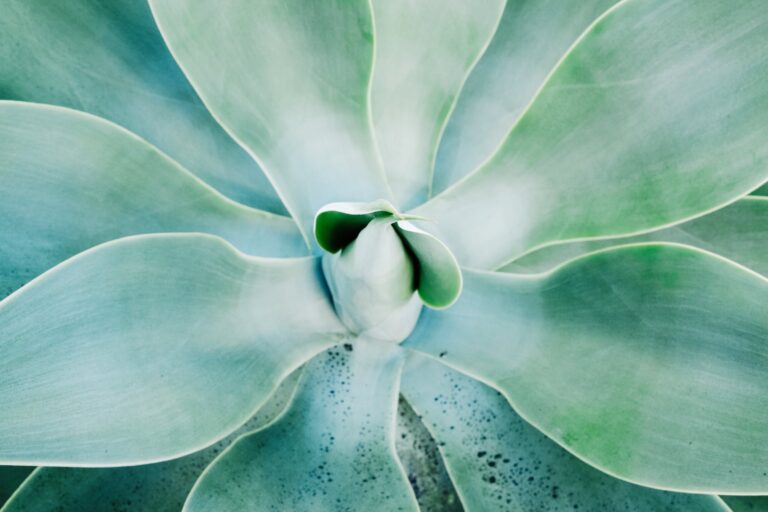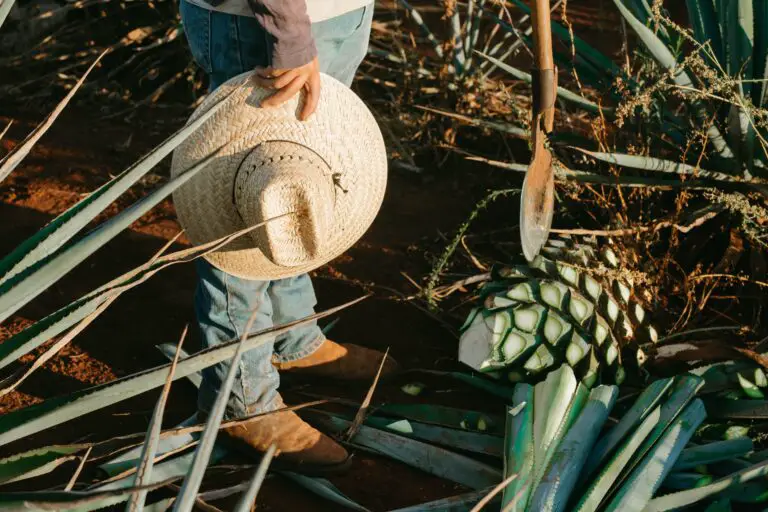Intro to Agave Annapolis: The Natural Sweetness of Maryland
Imagine a plant so versatile that it gives us both a landscaping showstopper and a healthier way to sweeten our teas and desserts. That’s agave for you—nature’s own sweet solution, thriving in the unexpected climate of Annapolis, Maryland. But this isn’t just about a plant; it’s a blossoming health trend taking root right in our backyards.

Agave, typically associated with arid regions like Mexico, has found a second home in the temperate landscapes of Annapolis. Health enthusiasts are all abuzz about agave-based products, and for good reason. Rich in natural sweetness, they’re an inviting alternative for those looking to ease up on processed sugars.
Strolling through Annapolis, it’s not uncommon to see the spiky silhouettes of agave plants adorning gardens. This rising star isn’t just about looks though; its popularity in the health-conscious community is skyrocketing. Visit any local health food store, and you’ll likely find shelves lined with agave nectar, a testament to the plant’s sought-after sweetness.
But what’s driving this green wave? It seems the secret lies in agave’s ability to blend into the culinary landscape, winning over the palates of those pursuing wellness without compromising on taste. Take a closer peek at the versatility of Agave Americana, and you’ll discover it’s more than just a pretty plant—it’s a burgeoning symbol of Annapolis’s commitment to healthier living.
Indeed, Agave Annapolis is more than a regional quirk—it’s the embodiment of Maryland’s embrace of natural, sustainable living. As this sweet succulent secures its spot in the heart of health aficionados, Annapolis shines as a beacon of natural living, an inspiration for sweet, healthful innovation.
Native or Not? Agave’s Journey to Annapolis
Picture this: the rolling hills of Maryland, splashed with hues from a diverse range of flora, suddenly welcoming an exotic addition—agave. Yes, the very same plant whose sap sweetens your margaritas has made itself at home in Annapolis. But how did this spiky, sun-loving succulent travel thousands of miles from its native Mexican territories to the Chesapeake Bay’s embrace? Let’s dig into this botanical enigma.

Agave’s presence in Maryland is a testament to the plant’s versatility. Originally hailing from the arid regions of the Americas, Agave has shown remarkable adaptability, thriving in Maryland’s temperate climate. This isn’t the plant’s first rodeo; it’s survived for millennia, adapting to varying environments and weathering different climates. In Maryland, it basks in the summer heat while steeling itself against the bracing winters—a true survivalist in the plant kingdom.
It’s fascinating to think of how these resilient plants could have journeyed here. Whether through intentional planting by admirers of its beauty and utility or accidental transport via the global trade winds, the agave has spread far and wide. Its easy propagation ensures that once it arrives, it’s here to stay. For those interested in nurturing these hardy beauties, it’s worth diving into the ultimate guide to succulent care, where you can learn to keep these plants—and other similar species—thriving.
So, is it native? Not quite. But in a world where botanical boundaries blur with each passing day, Agave’s story in Annapolis carries the reminder that nature is constantly on the move. How captivating it is to witness the natural world’s dynamism and its power to redefine what it means to belong. Truly, Agave Annapolis is more than a novelty; it’s a symbol of resilience, adaptability, and the ever-surprising narrative of migration.
Agave Farming in Annapolis: Methods and Challenges
Picture this: a field of spiky agave plants, a crop more commonly associated with the arid Mexican landscape, now finding a new home in Annapolis, Maryland. It’s not just a fantasy; local farmers are truly redefining agricultural boundaries by adapting to the unique mid-Atlantic climate to cultivate agave, the natural sweetener rapidly gaining attention.
Why Agave? Well, agave nectar has seen a surge in popularity as a natural sweetener, and with the world turning towards more sustainable and organic farming practices, the adaptable agave plant has become a valuable cash crop for forward-thinking farmers in the Chesapeake Bay area.
The climate in Annapolis presents its set of challenges for agave cultivation. Unlike its native environment, Annapolis offers four distinct seasons, including cold winters that can prove detrimental to the succulent. So how do local farmers outmaneuver Mother Nature to reap bountiful harvests of agave?
The key lies in innovative farming techniques. Farmers opt for species like Agave americana, known for its hardiness and tolerance to colder temperatures. Crop rotation and strategic planting times are meticulously planned to ensure the agave can mature during the warmer months.
Farming agave here also means contending with Maryland’s soil, which differs significantly from the rocky, calcareous substrates agave plants relish. It requires farmers to enrich their land and, at times, create raised beds filled with specially formulated soil to mimic the plant’s natural growing conditions. This mix typically includes sand and gravel for excellent drainage, supporting the agave’s growth without the root rot that can occur in damper soils.

There’s an entrepreneurial spirit in Annapolis’s agricultural community. Every barrier to growing agave seems to inspire a new solution. Take, for instance, the cold snaps. Farmers employ protective coverings and even temporary greenhouses to shield the young plants from frost. Some have experimented with companion planting, using other local crops to provide wind barriers and microclimate enhancement that benefits the agave.
Interested in seeing agave’s cousin plants in action? Check out the thriving varieties at Prickly Petals, where every green thumb can unlock the secrets to perfect plant growth, be it in Annapolis or any corner of the globe.
Apart from environmental hurdles, the labor-intensive nature of agave farming adds another layer of complexity. Agave plants take years to reach maturity, and once they do, harvesting the piña — the core from which nectar is extracted — is no small feat. This has led to an increased interest in machinery and tools that can ease the physical toll on farmers while ensuring the careful handling necessary for a quality harvest.
By meeting these challenges head-on, Annapolis’s agave farmers are not only positioning themselves at the forefront of a boutique agricultural trend but are also establishing the region as an unlikely hub for a sustainable sweetener. Their efforts underscore a commitment to innovation, resilience, and the bounteous rewards of modern-day farming.
The Healthful Harvest: Benefits of Agave from Annapolis
When it comes to natural sweeteners, agave from Annapolis is not just a sweet choice; it’s a smart one. This luscious plant, which thrives in Maryland’s unique climatic conditions, has made its mark by offering a bouquet of health benefits that make it stand out in the sweetener arena. Agave’s low glycemic index means it’s a friend to blood sugar levels, gently elevating them without the spike and crash associated with other sugars.
Delving deeper into the agave benefits, this Annapolis’s darling is rich in natural sweetness, which means less is more. You can say goodbye to artificial sweeteners and excess sugar while still satisfying that sweet tooth. Annapolis agave sweetens your life naturally, without adding calories that other sweeteners carry with abandon.
To truly appreciate the health offerings of Annapolis agave, let’s compare it to its distant relatives in other regions. While agave is grown widely, the agave nectar that whispers sweet nothings to Maryland’s patrons is distinct in its purity and taste. It retains its natural nutrients, including inulin—a type of fiber that supports digestive health and acts as a prebiotic, fostering a hospitable environment for beneficial gut bacteria to flourish.
In real-life application, incorporating Annapolis agave into daily diets has become a seamless endeavor for the health-conscious and culinary enthusiasts alike. Imagine drizzling agave over your morning yogurt, stirring it into a refreshing iced tea, or using it as a secret ingredient in your energy-boosting smoothie. These are everyday examples where agave seamlessly integrates wellness with pleasure, a true testament to Annapolis’s natural bounty.
But what really makes Annapolis agave a gem is its musical harmony with the local cuisine and lifestyle. It’s not just a product; it’s part of a culture that values health, sustainability, and the joy of living well. Through the use of agave, Annapolis whispers the secrets of a naturally sweet life, inviting us to partake in a healthful harvest that is both delicious and nutritious.
Engaging directly with a product that is as beneficial as it is indulgent, Annapolis residents and visitors alike have found in agave a companion to their wellness journey. It’s a sustainable, health-affirming nod to the indulgences that nature so kindly provides, wrapped up in that scrumptious agave sweetness.
From Plant to Plate: Agave Nectar’s Versatility in Annapolis Cuisines
Imagine a sweetener that not only delights your taste buds but also brings a touch of Annapolis’s natural charm to your plate. Welcome to the world of agave nectar, the sweet, syrupy nectar derived from the blue agave plant that’s been making waves in Annapolis’s culinary scene. Its versatile nature allows it to glide effortlessly into a myriad of local recipes, offering a unique twist to traditional favorites.

Think of agave nectar as Annapolis’s answer to a natural sweetener that can do it all. From drizzling over a stack of golden pancakes to sweetening handcrafted cocktails on a waterfront terrace, agave nectar is the unsung hero of the foodie world here. In regional dishes, it’s a game-changer, imparting a distinct flavor that refined sugars just can’t match.
Agave Nectar: A Culinary Staple in Annapolis
Why is agave nectar such a staple in Annapolis kitchens? Chefs here are masters at balancing flavors, and agave’s low glycemic index makes it a healthier alternative to other sweeteners. Its ability to enhance without overpowering is showcased in dishes like the Chesapeake Bay Crab Cakes, where a hint of agave complements the fresh, succulent crab meat, creating a mouthwatering medley of flavors.
Not just for the savory, agave nectar finds its way into delightful desserts too. Think about the last time you indulged in a velvety panna cotta with a subtle agave glaze, its delicate sweetness hinting at Annapolis’s rich botanical landscape. Or how about those refreshing sorbets served at City Dock, where agave is the secret ingredient, adding depth to the vibrant fruit profiles?
What’s truly remarkable about agave nectar is how it encapsulates Annapolis’s spirit in every drop. It’s a reflection of the city’s commitment to sustainable and health-conscious cuisine, contributing to a dining experience that’s both delicious and responsible. As you explore Annapolis, you’ll find this natural sweetener enlivening both your palette and your culinary adventures.
Supporting Local: Where to Find Agave Products in Annapolis
If you’ve been swept up by the wave of natural sweeteners taking the health-conscious world by storm, you’re probably well-acquainted with the transformative power of agave. This succulent plant, native to the arid regions of Mexico, has found a sweet spot right here in Maryland. The agave bandwagon in Annapolis is more than just a trend – it’s a movement supporting local farmers and artisans dedicated to bringing this natural gem to our community.
Ready for a journey through the charming streets of Annapolis to discover locally-produced agave nectar and an array of delightful products? Let’s zoom in on a few prime spots that are a hive of activity for natural sweetener enthusiasts, and believe me, they’re all the buzz!
Farmers’ Markets: A Sweet Exchange
Start your quest at Annapolis’s bustling farmers’ markets, where the air is rich with the scent of fresh produce and the entrepreneurial spirit of local growers. Here, amidst boxes of vibrant greens and the friendly chatter of neighbors, you’ll find small-batch agave nectar that’s as pure as the intentions of those who harvest it. A drizzle over your morning yogurt or a spoonful in your afternoon tea, and you’ll understand why local agave is a shining staple on the Annapolitan palate.
Local Health Food Stores: Nectar from the Neighborhood
For those who favor the convenience of a one-stop shop, the health food stores in Annapolis are a golden ticket. Shelves stacked high with everything from raw agave nectar to agave-infused snacks, these stores are our very own Willy Wonka factories for the wellness-oriented. And the best part? When you pick a bottle from these stores, you’re not just buying a sweetener – you’re strengthening a community’s root system.
Agave Artisans: A Taste of Creativity
And let’s not forget the artisans. From kitchen tables to small workshops, Annapolis’s very own food crafters are experimenting with agave to create concoctions that tickle the taste buds – think agave-sweetened baked goods, jams, and even sauces. Every purchase from these local creators supports the tradition of homemade goodness and the dream of a sweeter, more sustainable world.
Now, feeling intrigued about how all this comes together in the agave scene? This little nugget will do more than just tell you about it; let me show you what it’s all about. Take a break and watch this video that dives into the heart of agave culture and its spirited journey from plant to pantry:
Remember, when you choose to support local agave producers in Annapolis, you’re casting a vote for a sweeter future – both for your taste buds and for the environment. So next time you’re doing your grocery rounds, take a moment to seek out those local agave treasures. Join the legions of Annapolitans making a conscious choice to nurture both their health and their hometown with every drop of this liquid gold.
Agave Annapolis Goes Beyond Sweetening: Unexpected Uses
When you hear the word “agave,” your mind might immediately leap to its sweetening prowess, but there’s a whole world of unexpected applications just waiting to be discovered in Annapolis. Let’s dive into some of the more unconventional yet utterly fascinating uses of this versatile plant that go far beyond the sugar substitute shelf.
Beauty in a Bottle: Agave’s Pampering Powers
Agave nectar is not just for drizzling over your morning pancakes; it’s also making its mark in the beauty industry. Its natural humectant properties make it a perfect addition to skincare products, drawing moisture to the skin with the same efficiency it has in retaining water in its desert home. Local Annapolitan artisans are crafting face masks, serums, and lotions with agave as the star ingredient, harnessing its properties for a radiant and youthful glow. Imagine applying a nourishing cream that works as diligently as the agave plant itself, protecting and rejuvenating your skin.
A Spoonful of Healing: Agave’s Medicinal Merits
While not a replacement for professional healthcare, agave has been used in traditional medicine for various purposes. In Annapolis, those who subscribe to natural remedies have found solace in agave’s soothing texture and composition. It’s applied to wounds and even taken orally to calm a pesky cough, acting as a natural salve and cough suppressant, much like its aloe vera cousin.
Innovation Unearthed: Agave’s Industrial Applications
Here comes the truly surprising twist! Agave fibers, recognized for their durability, are breaking ground in the material industry. Innovative minds in Annapolis are exploring agave-based fabrics for environmentally friendly clothing options and have even begun to dabble in bio-composites. The prospect of driving a car with agave-fiber components isn’t a far-off fantasy but a burgeoning reality as this plant reaches its roots deep into the realm of sustainable technology.
As we venture further into understanding the full potential of agave, these unexpected uses illuminate how a single plant can sweeten more than just our taste buds—it can enhance our lives in multifaceted ways. Join us as we uncover the versatility of agave by viewing this insightful video on how agave’s various applications are revolutionizing the way we think about this desert gem.
`${video.embed_code}`
The Environmental Impact: Sustainable Agave Practices in Annapolis
The whispering winds of Annapolis are telling a new, greener story, one rooted in the sandy soils where the agave plants thrive. It’s a tale not merely of the harvest but of harmony between humans and habitat. As we draw back the curtain on Agave Annapolis, let’s peer into the implications for our planet.
Eco-Friendly Farming: A Revolution Rooted in Tradition
Around the historic bends of Annapolis, a revolution is unfolding in the form of sustainable agave cultivation. Farmers, with their hands as seasoned as the bay’s storied waters, are steering away from methods that once taxed the land. They’re embracing a future where farming doesn’t just take but gives back—a lifetime commitment to preservation and patience.
In the very heart of Maryland, real-life champions of the environment are redefining the essence of agave production. Picture this: a plantation where each blue-green leaf not only promises sweetness but also stands as a sentinel for sustainability. Here, older agaves are allowed to flower, their towering stalks serving as beacons for pollinators, ensuring that biodiversity is not just a buzzword but a blossoming reality.
Environmental Benefits: The Sweet Spot of Agave Cultivation
Beyond the succulent sap, agave plants in Annapolis are playing a crucial role in soil conservation. Their deep roots grip the earth, warding off erosion and fostering a subterranean world rich in microbial life. This is farming that not only takes the long view but sees the big picture—an ecosystem approach where each element, from bacteria to bees, is acknowledged and appreciated.
Furthermore, the very act of choosing agave over high-intensity crops is a nod to water wisdom. Agave’s remarkable resilience to drought conditions means fewer resources poured into irrigation, translating to a type of cultivation that can sip rather than gulp precious water supplies. It is an embrace of the natural rhythms of Maryland’s climate, a symphony of sustainable practice.
Implementing Sustainability on the Ground
The true testament to Annapolis’ commitment to green agro-practices can be found not in words but in action. Innovators in agriculture have adopted holistic farming techniques that marry old wisdom with new insights. Crop rotation with legumes, for instance, injects natural nitrogen back into the soil, reducing dependency on synthetic fertilizers.
What’s more, agave farms in Annapolis are increasingly becoming showcases for sustainable energy. Solar panels glint amidst the agave fields, harnessing the sun’s power—the very force that fuels the plants’ growth—to also fuel the machinery needed for their tender care and eventual harvest. It’s a clean, green loop of energy where waste is a word left to wither away.
Last but not least, enterprising farmers in Annapolis have taken to heart the creed of no waste, exemplified in their use of agave byproducts. The fibrous residue from processed agave is finding new life, serving as compost that returns to the fields to nurture the next generation of plants. It’s a philosophy of perpetual enrichment, a closed circle of sustainability that echoes the natural cycles themselves.
Agave Annapolis FAQ
So, you’ve heard about Annapolis’s natural sweetener and have some questions buzzing in your mind, haven’t you? Well, brace yourself for the sweet and the spiky truths as we dive into the frequently asked questions about agave in Annapolis!
What’s the Buzz About Agave in Annapolis?
First things first, let’s talk about what’s making waves in Maryland’s natural sweetener scene. Agave has been a game-changer for health-conscious folks looking for an alternative to refined sugars. It’s like discovering that your trusty old friend can also double as a superhero – sweetening your life without the guilt!

Is Agave Really Better Than Sugar?
Let’s chew on this – agave syrup has a lower glycemic index than your standard table sugar. This means it’s less likely to spike your blood sugar levels, which is great news for the sweet-toothed Annapolitans. Picture this: sipping on your morning coffee with a dash of agave, feeling all suave and stable, with none of that sugar-rush frenzy.
Can I Grow Agave at Home in Annapolis?
Well, you can certainly try! But just like that ambitious home workout routine, it comes with its challenges. Agave plants love the sun and aren’t too fond of cold. But with some tender love, care, and a prime sunny spot, you might just be the next neighborhood Agave aficionado. Imagine that – plucking your very own home-grown agave leaves to sweeten your dishes!
Is Agave Good for the Environment?
If you’re picturing acres of agave plants gently swaying in the Annapolis breeze, you’re on the right track. Agave farming, compared to some traditional crops, can be quite sustainable. It requires less water – a win for our blue planet – and when farmed responsibly, it supports biodiversity. It’s like the plant world’s version of carpooling – good for you and good for Mother Nature.
Does Agave Have any Culinary Uses Beyond Sweetening?
Oh, absolutely! Apart from jazzing up your teas and coffees, agave can be a nifty secret ingredient in your marinades and glazes. It has that magical power to caramelize, giving your barbeque that glossy, Instagram-worthy sheen. Just imagine drizzling agave-infused sauce over your grilled masterpiece at your next backyard shindig – talk about a game-changer!
Final Word of Advice?
Remember, agave is like the jazz of the sweetener world – versatile, smooth, and a tad exotic. Enjoy it responsibly, and you’ll be doing your taste buds (and your waistline) a favor. And next time you’re in Annapolis, don’t just admire the historic sites – swing by a local market and take a little bottle of this natural sweetener home with you. It’s the perfect memento from Maryland – sweet, natural, and full of local charm!



